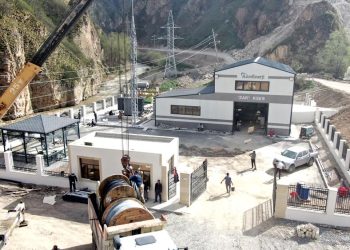The latest diplomatic crisis with Russia, which started when a Russian airplane was downed by Turkey on Nov. 24, has exposed many significant points about the fragility of the situation in the region. One of the most crucial points that this crisis has shown is Turkey’s urgent need to diversify its energy sources.
Maintaining energy security is a serious business and reaching an energy mix that is as diverse as possible is key for any country in maintaining its economic growth and sustaining its people’s daily lives.
The latest crisis with Russia has unfortunately indicated how Turkey is in a bad position, as the country is very dependent upon Russian energy sources. According to data from Turkey’s energy watchdog, the Energy Market Regulatory Authority (EPDK), Turkey met some 54.76 percent of its natural gas demand from Russia in 2014, some 26 billion cubic meters (bcm) of its total 50 bcm gas imports. What is more, around half of Turkey’s electricity production is made using natural gas. This means that in the case of any halt in the Russian gas flow into Turkey, electricity production will go through hoops, as well as people’s heating needs, just ahead of the winter months.
Turkish officials are now in an obvious effort to seek new energy alternatives. Such moves need to be appreciated, although sources from Russia’s Gazprom have said there would be no halt in the gas flow to Turkey.
The point is, however, that such moves were needed to be taken much earlier. Allow me to elaborate.
First of all, in a country which is almost 100 percent dependent on foreign countries for energy like Turkey, there needs to be big gas storage capacities, more than 20 percent of their annual consumption.
In Turkey this amount is just around 5 percent, and further projects urgently need to be developed. In 2014, Turkey consumed around 45 bcm of natural gas. According to the Turkish Energy Ministry’s strategic plan for 2015-2019, there are plans to raise the gas storage capacity to 10 percent of the country’s annual consumption level by the end of 2018 and to further raise this to 20 percent in the long-term. There are still miles to drive though, and the development process needs to be accelerated immediately.
Secondly, Turkish officials have made strategic visits to several energy-rich countries, including Qatar and Azerbaijan, and have been developing several energy projects to diversify its energy mix, but the realization of these projects will take at least three or four years. The planned Trans-Anatolian Natural Gas Pipeline (TANAP) may be the most prominent project here. TANAP envisages carrying 16 bcm of gas per year from Azerbaijan’s Shah Deniz II field in the Caspian Sea upon its initial launch in 2019. Its capacity is set to rise to 23 bcm by 2023 and to 31 bcm by 2026. Turkey will take some 6 bcm of gas from this pipeline to start, while 10 bcm will be carried to Europe. We can add the planned 10 bcm gas flow from northern Iraq and further expected gas pumping from Iran to this equation, but these moves will unfortunately take time to realize. This is also the case for the expected liquefied natural gas (LNG) deal with Qatar.
I haven’t even mentioned other examples that show the high dependence of Turkey on Russian energy sources, such as the planned first nuclear power plant in Turkey.
Both sides should resolve the crisis as soon as possible and if the crisis is resolved, as we all hope, Turkey must still continue its attempts to diversify its energy sources to end this huge dilemma, as the realization of such projects takes a long time.












